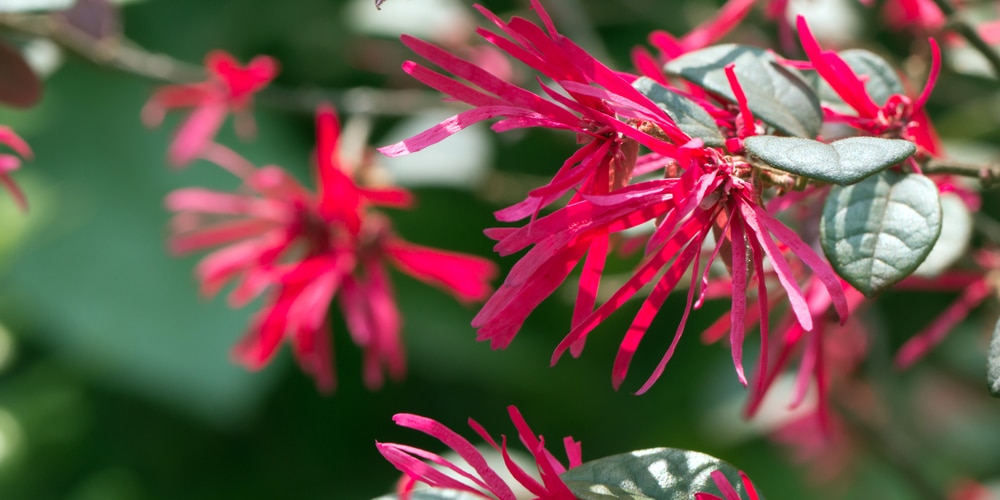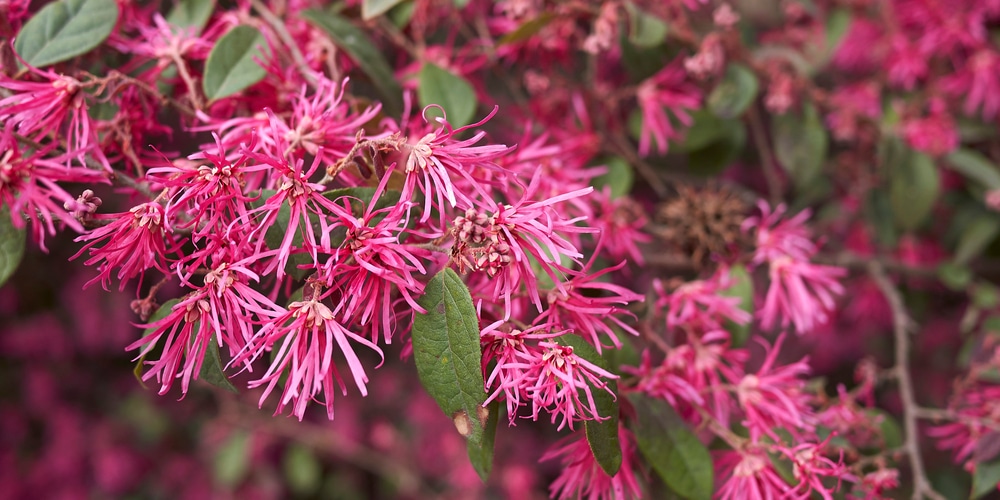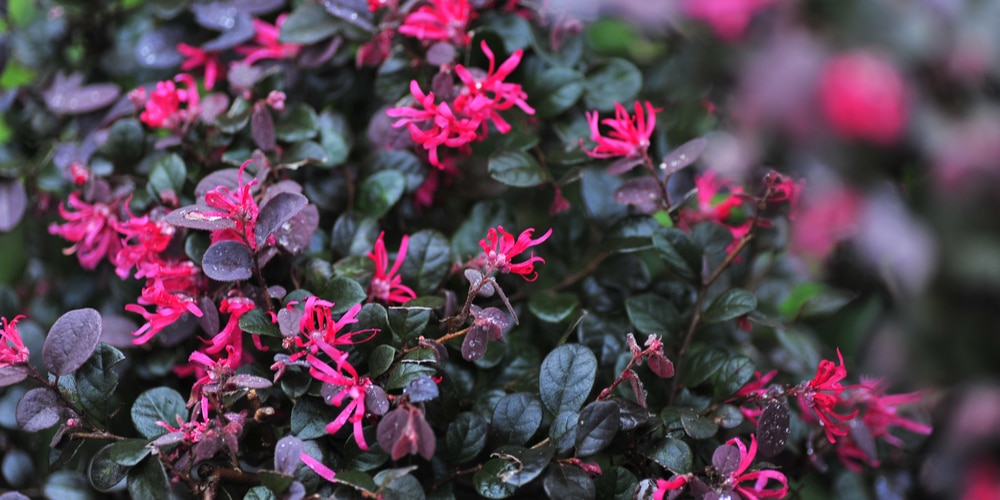Most property owners use hedges to create a boundary between their land and their neighbor’s yard. Hedges are also a privacy screen or add some greenery to an otherwise flat landscape.
If you are looking for a hedge that is both beautiful and easy to care for, loropetalum is an excellent option.
Loropetalum, also known as the Chinese fringe plant, is a genus of evergreen shrubs native to China and Japan. These shrubs are part of the witch hazel family and are known for their distinctively-colored foliage.
The leaves are usually purple but can also be pink, red, or green. The flowers of loropetalum are small and white, and they bloom in the springtime.
Varieties of Loropetalum

Loropetalum is a genus of evergreen shrubs that is part of the family Hamamelidaceae. There are typically three species of Loropetalum, all of which are native to China. These shrubs are characterized by their lance-shaped leaves and clusters of small, bell-shaped flowers.
The most common variety is Loropetalum chinense, which can grow up to 15 feet tall and has deep purple flowers. Other popular types include Loropetalum subcordatum, which has yellow flowers, and Loropetalum lanceum, which has white flowers.
Loropetalum as Hedges
Loropetalum is an excellent plant for hedges. These shrubs are fast-growing and can reach a height of 15 to 8 feet. Loropetalum is also drought-tolerant, which makes it a low-maintenance plant.
If you live in an area with hot summers, this plant is a good choice for a hedge because it will still look good even if it doesn’t get much water.
Loropetalum Hedge Spacing
Establishing the proper hedge spacing for loropetalums is essential to achieving a neat, manicured look. Depending on the size and shape of your desired hedge, you will need to space the plants accordingly.
For a formal hedge, a spacing of 3 to 5 feet apart is ideal. It gives the plants room to grow and fill in without overcrowding but will still provide that solid hedge you want.
However, if you prefer to keep them in clusters, you need to plant them 5 to 8 feet apart.
Additionally, it is also essential to maintain a consistent spacing between each row. Otherwise, the hedge will appear uneven and unruly. With proper planning and spacing, you can create a stunning loropetalum border that will enhance the beauty of your landscape.
Loropetalum Hedge Spacing from Fences
When planting loropetalum next to a fence, we can’t reiterate enough the need to maintain consistent spacing. If the plants are too close to the fence, they will crowd and smother each other. Not only will this inhibit their growth, but it will also give the hedge an untidy appearance.
Additionally, planting this too close to your face can also bend and damage that plant’s branches. With that being said, the plants need to be 18 – 24 inches away from the fence to give them enough space to grow.
Creating a Loropetalum Hedge
Once you have established the plant spacing for your loropetalum hedge, you can begin planting. Here’s a simple guide on how to grow your hedge.
- Choose a partially sunny location to plant your loropetalum hedge. These shrubs partial shade to full sun.
- Loosen the soil in the planting area with a shovel or tiller. This will help the roots establish more quickly.
- Dig a hole that is twice as wide and just as deep as the loropetalum’s roots.
- Place the loropetalum in the hole and backfill with soil.
- Tamp down the soil around the base of the plant to secure it in place.
- Water deeply to encourage root growth.
- Apply a layer of mulch around the bottom of the loropetalum to help retain moisture and control weeds.
- Prune your loropetalum hedge regularly to maintain its shape and size.
Caring for Loropetalum as Hedge Plants
Loropetalum is a relatively low-maintenance plant, but you still need to do some things to keep it healthy and looking its best.
Although a drought-tolerant, it still needs regular watering, especially when it is first planted. Once the roots are established, you can water less frequently.
Loropetalum doesn’t require a lot of fertilizer, but you can give it a light feeding in the spring to help it grow. They also respond well to pruning and can be pruned into various shapes.
How to Prune Loropetalum Hedge Properly
Pruning loropetalum is essential to maintaining its shape and size. Here’s a list of tools you will need to prune your hedge correctly.
- Pruning shears
- Hedge trimmer
- Garden gloves
- Safety goggles
Instructions:
Before you start, take a step back and look at the overall shape of your loropetalum hedge. This will help you determine where to make your cuts.
Start by pruning any dead or damaged branches. Cut the stems back to a healthy bud or branch.
Next, prune any branches that are crossing or rubbing against each other. These can damage the loropetalum over time and affect its growth.
After removing all the dead, damaged, and crossing branches, you can start shaping the hedge. Trim the sides and top to create a neat, uniform look.
Use sharp pruning shears and hedging trimmers to avoid damaging the loropetalum. It is also vital to wear garden gloves and safety goggles to protect yourself from the branches.
Loropetalum Hedge Spacing: Final Thoughts
Loropetalum is an excellent choice for hedges because of its evergreen foliage, unique physical characteristics, and low maintenance requirements.
When planting loropetalum, it is essential to maintain proper spacing to promote healthy growth and prevent the plants from crowding each other. With proper care, your loropetalum hedge will thrive and add beauty to your landscape all year-round.

